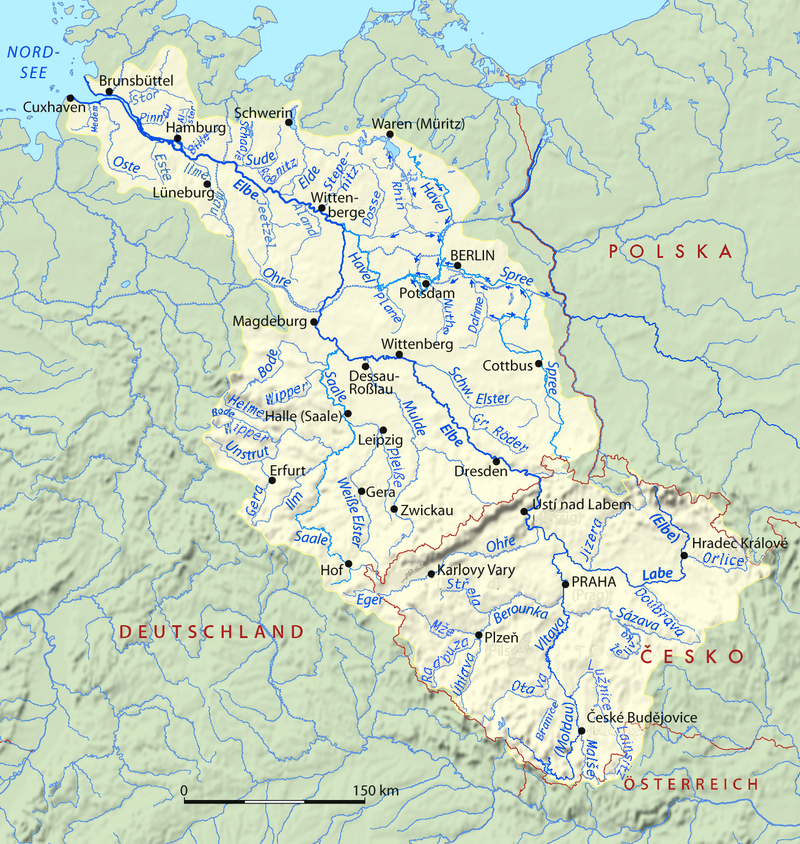Danube
The Danube is the second-longest river in Europe (the Volga is the longest). It is the longest river of the European Union. The river is 2,860 km (1,777 mi) long. Brigach and Breg join together in Donaueschingen (near the Black Forest) to “make” the Danube. The Danube flows through or makes part of the border of 10 countries: Germany, Austria, Slovakia, Hungary, Croatia, Serbia, Romania, Bulgaria, Moldova and Ukraine. The river ends in the Black Sea through the Danube Delta.  Bigger cities along the Danube include Ulm, Regensburg in Germany; Linz, Vienna in Austria; Bratislava in Slovakia, Budapest in Hungary; Vukovar in Croatia; Novi Sad and Belgrade in Serbia.
Bigger cities along the Danube include Ulm, Regensburg in Germany; Linz, Vienna in Austria; Bratislava in Slovakia, Budapest in Hungary; Vukovar in Croatia; Novi Sad and Belgrade in Serbia.

The Loire River is the longest river in France. It is 1,013 km long. It originates in the Massif Central. Its mouth is near Nantes by the Atlantic Ocean. The Loire gives its name to 6 French departments. For years, the Loire was very important for France’s commerce. When the railway developed in the 19th century, it put an end to its importance.
Elbe
 The Elbe River is one of the major waterways of central Europe. It comes from the North West Czech Republic. It flows through much of Germany. At Cuxhaven, it flows into the Wadden Sea, which is part of the North Sea. Important big cities on the boards of the river are Hradec Králové, Pardubice and Ústí nad Labem in the Czech Republic, and Dresden, Magdeburg and Hamburg in Germany.
The Elbe River is one of the major waterways of central Europe. It comes from the North West Czech Republic. It flows through much of Germany. At Cuxhaven, it flows into the Wadden Sea, which is part of the North Sea. Important big cities on the boards of the river are Hradec Králové, Pardubice and Ústí nad Labem in the Czech Republic, and Dresden, Magdeburg and Hamburg in Germany.
The port in Hamburg is the second most important seaport in the EU, after Rotterdam, and the third most important for container ships in the EU (after Rotterdam and Antwerp). Ships can travel up to Pardubice.
The Elbe is an important river, and is classified as a stream. Up to Cuxhaven, it is 727 km (452 mi) long, 367 km (228 mi) are in the Czech Republic. Officially, its length is 767.8 km (477.1 mi), which is a point in the open sea.
Rhine
The Rhine is one of the major European rivers, which has its sources in Switzerland a nd flows in a mostly northerly direction through Germany and the Netherlands, emptying into the North Sea. The river begins in the Swiss canton of Graubünden in the southeastern Swiss Alps, forms part of the Swiss-Liechtenstein, Swiss-Austrian, Swiss-German and then the Franco-German border, then flows through the German Rhineland and the Netherlands and eventually empties into the North Sea.
nd flows in a mostly northerly direction through Germany and the Netherlands, emptying into the North Sea. The river begins in the Swiss canton of Graubünden in the southeastern Swiss Alps, forms part of the Swiss-Liechtenstein, Swiss-Austrian, Swiss-German and then the Franco-German border, then flows through the German Rhineland and the Netherlands and eventually empties into the North Sea.
The largest city on the Rhine is Cologne, Germany, with a population of more than 1,050,000 people. It is the second-longest river in Central and Western Europe (after the Danube), at about 1,230 km (760 mi), with an average discharge of about 2,900 m3/s (100,000 cu ft/s).
Volga
 The Volga is the longest river in Europe. In Russian it is called Волга, in the Tatar language its name is İdel.
The Volga is the longest river in Europe. In Russian it is called Волга, in the Tatar language its name is İdel.
Many people see it as the national river of Russia. It flows through the western part of the country. It is Europe’s longest river, with a length of 3,530 kilometres, and forms the core of the largest river system in Europe.
It rises in the Valdai Hills of Russia, 225m above sea level north-west of Moscow. The Kama, Oka, Vetluga and the Sura are its main tributaries. The Volga and its tributaries form the Volga river system, which drains an area of about 1.35 million square kilometers in Russia. The Volga Delta has a length of about 160 kilometers. It includes 555 channels and small streams. It is the largest estuary in Europe. It is the only place in Russia where pelicans, flamingos, and lotuses may be found. The Volga freezes for most of its length for three months each year. Some of the biggest reservoirs in the world can be found along the river.
Sources:
Danube Facts for Kids. Kiddle Encyclopedia.
Loire River Facts for Kids. Kiddle Encyclopedia.
Elbe Facts for Kids. Kiddle Encyclopedia. Image source
Rhine Facts for Kids. Kiddle Encyclopedia.
Volga River Facts for Kids. Kiddle Encyclopedia.
